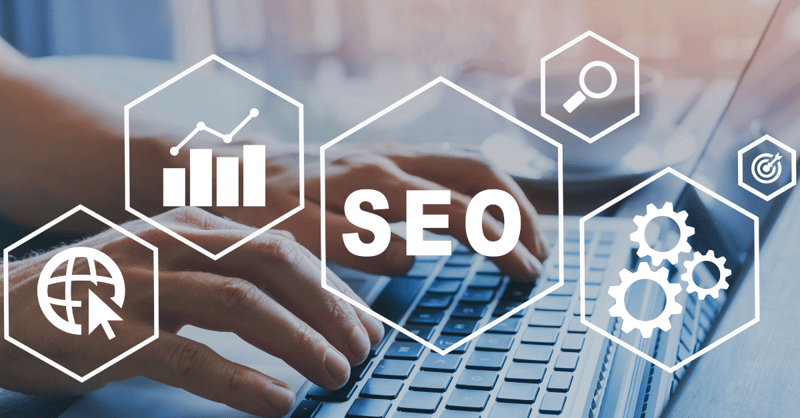We originally wrote this post way back in 2016, a lifetime in social media years. Since then, LinkedIn has been acquired by Microsoft and the platform has undergone some significant changes. It’s time for a fresh look at what’s changed.
LinkedIn has grown substantially since 2016. Almost by stealth, its user base has expanded to more than 500 million members, 250 million of whom are active every month. One million professionals have published posts on LinkedIn, there have been one billion endorsements, and two new members join LinkedIn every second. It is still the go-to social network for B2B businesses and business owners and a fantastic platform to share good marketing content.
Some of the changes LinkedIn has made include the decline of Groups, new options for Company Pages, an increasing array of paid advertising options, a decline in the role of influencers and the growing popularity of Sales Navigator among business development teams. However the changes aren’t without grumbles of discontent, so the question remains, is LinkedIn right for your business in 2018?
LinkedIn makes sense when:
1. The business relies on developing and deepening relationships
If a business depends on recurring revenue, and lifetime value is a key metric, LinkedIn can be a key channel for engagement, from first contact to loyal customer. A chance meeting at a physical networking event can be followed up with an offer to connect.
Once connected, LinkedIn has a variety of tools for strengthening that bond. Sharing regular content that’s relevant to a new connection shows interest in their field and offers added value. Grow your network further by syncing your profile with your address book, list your relevant skills, and endorse your contacts whose skills genuinely deserve one, which may prompt them to endorse you in return.
LinkedIn’s power extends beyond first degree connections, too. Immediate contacts can help get you in front of second or even third degree connections, and LinkedIn can make suggestions using the ‘introduction’ functionality; essentially the digital equivalent of ‘oh, you should meet such and such’.
- You may like: Is SEO right for my business?
On top of that, relationship managers can use the Sales Updates in LinkedIn Sales Navigator to build stronger bonds with B2B buyers. Firstly, they help users to stay current on company updates by providing real-time information on saved accounts and leads. Secondly, they provide an important source of information for engaging B2B buyers by, for example, seeing what connections are sharing, so that they can stay apprised of what’s currently important to key contacts. And thirdly, they provide continuous opportunities to stay top-of-mind with key account contacts. Congratulating someone on a promotion or work anniversary might feel like a small gesture but even this can be the difference between being considered or ignored when a new buying cycle begins.
At the end of March 2018, LinkedIn launched video for Sponsored Content and Company Pages, enabling B2B marketers to post a native video to their Company Pages and then run targeted ad campaigns. Not only does video provide better reach and engagement, LinkedIn's Campaign Manager enables audience targeting via job title, industry, company name and more. Using LinkedIn's Matched Audiences allows brands to take their targeting to the account level: re-approach existing customers by uploading emails from current accounts or target new accounts by uploading emails of prospects in the lead development stage from the company CRM. Results can then be tracked with LinkedIn's built-in conversion tracking.
2. If you want to recruit talent
LinkedIn has clearly identified talent management as a struggle for businesses and an opportunity for them. It has produced helpful white papers for one, but the platform itself has changed to make highlighting, targeting and reaching talent easier by offering a network of online connections who can be sourced for relevant skills or who you can ask for referrals. LinkedIn’s Talent Solutions, which provides innovative recruiting tools to help businesses improve their talent acquisition, is a key revenue-generator: in 2016, it was responsible for 65% of LinkedIn’s revenues.
Showcasing yourself and your company as authentic and personable will help you build better relationships and connections with your customers, employees and prospects. By having something to say, potential employees can get a sense of the type of company they are being approached by.
If cold marketing to prospective talent feels a little non-GDPR compliant, you should be fine under legitimate interests. But LinkedIn is working to ensure that its products and services are compliant by May and has answered some of the most pressing questions here.
3. You are targeting a clear niche
Two years ago, LinkedIn Groups were spaces designed to allow like-minded individuals to share ideas, information and content. They could be used in two ways: users could join groups relevant to their own niche and share content, and they could answer questions that positioned them as experts in their field.
That was the idea, anyway. What happened instead is that they became oversubscribed and a target for spam or self-serving sales content, leading to lack of member engagement and interest. But changes are afoot as LinkedIn is planning to update Groups for 2018.
The main change is that it will be easier to discover and access groups, with the latest Groups content displayed in notifications and the homepage feed. It will also be possible to post videos into Groups, @mentioning other members and creating, it is hoped, a deeper and richer conversation.
Whether or not this succeeds is down to the Group members. Groups shouldn’t just be a forum for posting your own content: they should be a place where thoughtful and relevant conversation is initiated. Engagement will be key, and the more that members put in, the more they will get out.
Another way to target a specific niche is by using targeted lists. Account Targeting and Contact Targeting enable businesses to target large lists of companies or email contacts, so that they can scale their company and contact targeting initiatives to reach key accounts and audiences. Campaigns can be tailored so that target accounts and contacts are prioritised, and further segmentation, for example by job function or seniority, helps to refine the target audience.
Account and Contact Targeting are a good tool for businesses that cross sell to large businesses because it enables selling to different departments, and they can be used to re-market to churned customers.
Lead Gen Forms - available for Sponsored InMail and Sponsored Content - enable more qualified leads to be captured by pulling profile data into a form that members can submit with one click. They enable high-quality leads to be generated at scale thanks to forms pre-filled with accurate LinkedIn profile data, enabling members to send their professional information with just a couple of clicks. The cost per lead, lead form fill rate, and the number of leads from specific professional audience segments can also be tracked, and leads downloaded from Campaign Manager or integrated with a preferred marketing automation or CRM tool.
On the harder sell, LinkedIn offers more direct, highly-targeted advertising. The cost is minimal (generally starting at around $2 for a CPC ad), but can be tailored to suit specific requirements.
4. Your business is an open book
Up until recently, personal profiles were known to generate more results (in terms of sales) than company profiles on LinkedIn, when allowed to do so. Fears of employees being poached by recruiters are very real, with more than 11 million jobs advertised on the site and with so many recruiters using it to vet potential candidates.
However, this should not deter businesses from using the service to showcase their talent, products and services and brand values. Businesses wary of competitors’ claws should ask themselves why: what could they be doing to make sure employees don’t want to be poached?
In recent years, LinkedIn has become more focused on building business networks than it has job hunting, and raising the profiles of individuals in the business raises the business profile by proxy. There is no doubt, however, that members of staff can apply for jobs elsewhere using the platform.
It’s also possible for competitor organisations to glean information about a rival business from LinkedIn: employers must have an open mind when encouraging their staff to use the service. While employees’ LinkedIn profiles cannot be owned by their employers (despite efforts by some), employers can work to ensure that both employee and company profiles match up, creating brand cohesion between the individuals within the business.
Having said that, there have been some big updates to Company Pages recently. As well as the addition of video content, Company Pages tend to rank highly in search results. In addition to a Company Page, you can also create Showcase Pages which enable you to create a community of followers around a particular subject or service.
Given that more help with Company Pages is the number one request from marketers, it’s definitely another channel that needs time and attention. For more on enhancing your Company Pages, and for advice and resources on content marketing planning, organisation and structure, LinkedIn offers its own resources here.
5. Business development is a core focus
Those who are serious about making the most of LinkedIn for business development can choose from two premium plans, Sales Navigator (starting at £49.99 per month) and Premium Business (starting at £39.99 per month), which allow access to extended features including additional InMail messages, who’s viewed your profile, custom lead lists, sales or business insights, and lead recommendations.
New plans for Sales Navigator include integration with LinkedIn Campaign Manager, so that B2B marketers can precisely target the accounts and leads their sales team is pursuing; additional integration with sales applications including Oracle Sales Cloud and Microsoft Outlook; a new partner programme; a dedicated mobile app, and a host of other developments to improve CRM data, manage the sales pipeline and discover better leads.
LinkedIn is not just a tool for managing existing connections: it also has incredible lead-sourcing potential which makes sense when you consider the amount of data LinkedIn holds on its users. Think of it as the world’s biggest business directory.
Advanced Search is hugely powerful, particularly on the premium pricing plans. Search by business type, size and geographical location, then narrow it down further by searching out the specific job roles within those businesses. For a company with clearly defined target personas, the advanced search is a gold mine of information.
With targeted lists, LinkedIn activity can be tailored so that advertisers can target businesses that cross-sell to large businesses by selling to different departments, or they can be used by B2B companies with old customers that they would like to market to again.
LinkedIn Influencers are selected by invitation only and can no longer be applied for, so as a business development tool this avenue is unfortunately closed.
Invest elsewhere if:
1. B2C relationships are your priority
While LinkedIn is a solid choice for B2C firms looking to keep supplier and partner relationships solid, their marketing budget is likely to be better spent elsewhere. A consumer-focused business will find a much more engaged and eager audience on Facebook and Twitter, or even through mobile apps.
2. You’re unable to invest the time and resources required
LinkedIn only works hard for its members if they put the effort into making it work. Think of it as similar to a blog: a LinkedIn profile is more likely to be noticed, trusted and interacted with if it is kept up-to-date, and if a user is a consistent contributor to the platform. What the positive evolution of LinkedIn does demonstrate is that without continued investment in original content, marketing on LinkedIn is going to be very difficult, and only by giving personal and company profiles daily attention will a business avoid the common LinkedIn mistakes.
To draw on the face-to-face networking parallel again, if the audience isn’t in attendance or there’s no effort to meet the right people, the time is spent better elsewhere. If, however, there’s a willing bunch of the right attendees there, the right conversations can help build relationships and business opportunities. In that instance, LinkedIn is the best networking event of all.
The Marketing Centre provides proven part-time marketing directors to ambitious businesses – the effective, economical alternative to marketing consultants. Like this article? Visit our blog for further guides to digital marketing channels.



